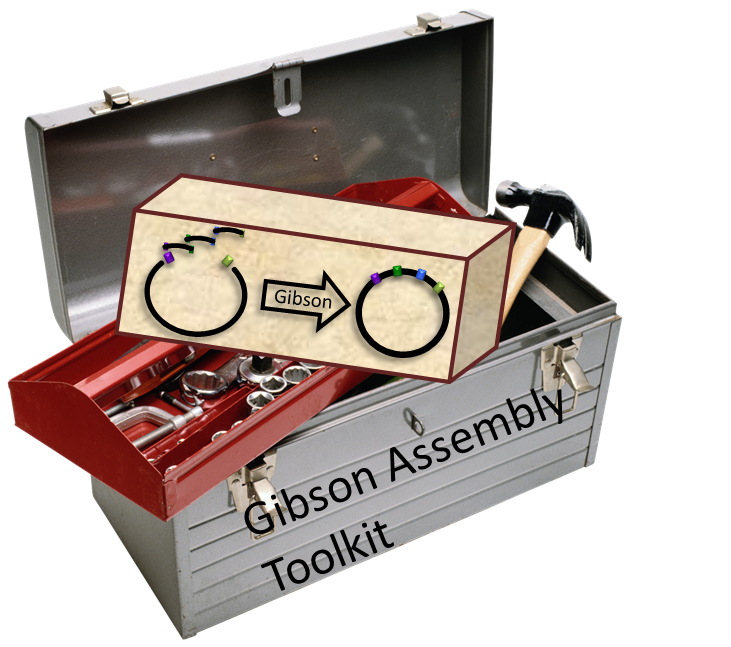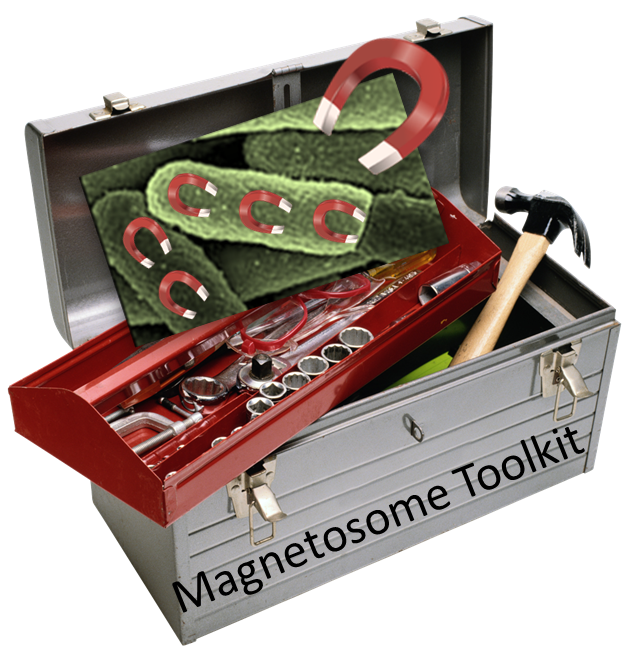Team:Washington/Magnetosomes/Background
From 2011.igem.org
(→Gibson Assembly Toolkit) |
|||
| Line 2: | Line 2: | ||
__NOTOC__ | __NOTOC__ | ||
| - | <center><big><big><big><big>iGEM Toolkits: Background</big></big></big></big></center><br><br> | + | <center><big><big><big><big>'''iGEM Toolkits: Background'''</big></big></big></big></center><br><br> |
As with the expansion of the iGEM competition, many iGEM teams have started to investigate the possibility of working with large-scale genomes. Large-scale gene manipulation often requires the use of tools which allow multiple gene inserts as to bring the cloning project from single gene level to a multiple gene level. However, the current BioBrick standard vectors available through iGEM are not designed for multiple-insert cloning. Therefore, the UW iGEM team decided to research methods to improve cloning efficiency and as a result, two "toolkits" were submitted to the registry. | As with the expansion of the iGEM competition, many iGEM teams have started to investigate the possibility of working with large-scale genomes. Large-scale gene manipulation often requires the use of tools which allow multiple gene inserts as to bring the cloning project from single gene level to a multiple gene level. However, the current BioBrick standard vectors available through iGEM are not designed for multiple-insert cloning. Therefore, the UW iGEM team decided to research methods to improve cloning efficiency and as a result, two "toolkits" were submitted to the registry. | ||
| Line 9: | Line 9: | ||
| - | === Gibson Assembly Toolkit === | + | === '''Gibson Assembly Toolkit''' === |
As an expansion of work started by the [https://2010.igem.org/Team:Washington/Tools_Used/Next-Gen_Cloning 2010 UW IGEM team], this year we developed and submitted a set of plasmid backbones for BioBricks that are optimized for Gibson assembly. Based on the bglBrick standard [http://dspace.mit.edu/bitstream/handle/1721.1/46747/BBFRFC21.pdf?sequence=1 RFC 21], these "pGA" vectors comprise the [https://2011.igem.org/Team:Washington/Magnetosomes/GibsonVectors Gibson Assembly Toolkit]. These vectors give much higher efficiencies than the equivalent pSB vector and are fully compliant with BioBrick [http://www.synbio.org.uk/gibson/downloads/files/RFC57.pdf RFC 57] developed by the 2010 [https://2010.igem.org/Team:Cambridge Cambridge] iGEM team. | As an expansion of work started by the [https://2010.igem.org/Team:Washington/Tools_Used/Next-Gen_Cloning 2010 UW IGEM team], this year we developed and submitted a set of plasmid backbones for BioBricks that are optimized for Gibson assembly. Based on the bglBrick standard [http://dspace.mit.edu/bitstream/handle/1721.1/46747/BBFRFC21.pdf?sequence=1 RFC 21], these "pGA" vectors comprise the [https://2011.igem.org/Team:Washington/Magnetosomes/GibsonVectors Gibson Assembly Toolkit]. These vectors give much higher efficiencies than the equivalent pSB vector and are fully compliant with BioBrick [http://www.synbio.org.uk/gibson/downloads/files/RFC57.pdf RFC 57] developed by the 2010 [https://2010.igem.org/Team:Cambridge Cambridge] iGEM team. | ||
| Line 36: | Line 36: | ||
<br/> | <br/> | ||
| - | === Magnetosome Toolkit === | + | === '''Magnetosome Toolkit''' === |
In addition, we were also ambitious about assembling a large gene-construct of over 16 kb. Therefore, utilizing our pGA vectors and Gibson cloning methods, the [https://2011.igem.org/Team:Washington/Magnetosomes/Magnet_Toolkit Magnetosome Toolkit] was developed with the goal to build magnetic ''E.Coli''; a novel characteristic expressed solely by magnetotactic bacteria, such as ''Magnetospirillum magneticum'' strain AMB-1. | In addition, we were also ambitious about assembling a large gene-construct of over 16 kb. Therefore, utilizing our pGA vectors and Gibson cloning methods, the [https://2011.igem.org/Team:Washington/Magnetosomes/Magnet_Toolkit Magnetosome Toolkit] was developed with the goal to build magnetic ''E.Coli''; a novel characteristic expressed solely by magnetotactic bacteria, such as ''Magnetospirillum magneticum'' strain AMB-1. | ||
Revision as of 02:36, 23 September 2011
As with the expansion of the iGEM competition, many iGEM teams have started to investigate the possibility of working with large-scale genomes. Large-scale gene manipulation often requires the use of tools which allow multiple gene inserts as to bring the cloning project from single gene level to a multiple gene level. However, the current BioBrick standard vectors available through iGEM are not designed for multiple-insert cloning. Therefore, the UW iGEM team decided to research methods to improve cloning efficiency and as a result, two "toolkits" were submitted to the registry.
Gibson Assembly Toolkit
As an expansion of work started by the 2010 UW IGEM team, this year we developed and submitted a set of plasmid backbones for BioBricks that are optimized for Gibson assembly. Based on the bglBrick standard [http://dspace.mit.edu/bitstream/handle/1721.1/46747/BBFRFC21.pdf?sequence=1 RFC 21], these "pGA" vectors comprise the Gibson Assembly Toolkit. These vectors give much higher efficiencies than the equivalent pSB vector and are fully compliant with BioBrick [http://www.synbio.org.uk/gibson/downloads/files/RFC57.pdf RFC 57] developed by the 2010 Cambridge iGEM team.
- What's in the Gibson Assembly Toolkit?
- Five plasmid backbones
- 2 High copy extraction/cloning vectors
- pGA1A3, pGA1C3
- 1 medium copy expression vector
- pGA3K3
- 2 low copy expression vectors
- pGA4A5, pGA4C5
Magnetosome Toolkit
In addition, we were also ambitious about assembling a large gene-construct of over 16 kb. Therefore, utilizing our pGA vectors and Gibson cloning methods, the Magnetosome Toolkit was developed with the goal to build magnetic E.Coli; a novel characteristic expressed solely by magnetotactic bacteria, such as Magnetospirillum magneticum strain AMB-1.
What’s in the Magnetosome Toolkit?
- A set of the 18 essential genes for the various steps of magnetosome formation.
- Our favorite genes in pGA vectors
- A table compiling individual gene functions from our literature search
 "
"




